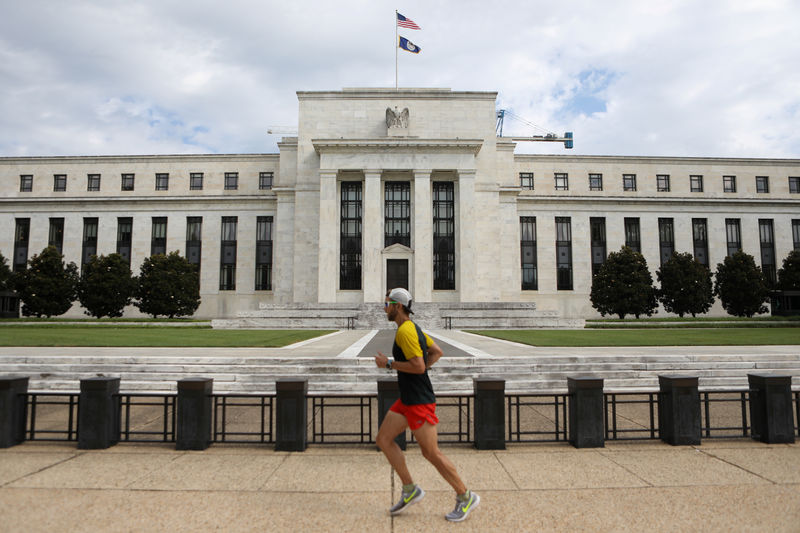By Yasin Ebrahim
Investing.com -- Federal Reserve officials discussed the prospect of stepping up the pace of monetary policy tightening including plans to cut the size of the central bank’s balance sheet after the May meeting, the Fed’s March meeting minutes showed Wednesday.
"[P]articipants agreed they had made substantial progress on the plan and that the Committee was well placed to begin the process of reducing the size of the balance sheet as early as after the conclusion of its upcoming meeting in May," according to the Fed minutes.
The minutes also detailed plans about the size and pace of balance reduction, which will be phased-in over the course of three months or modestly longer.
Under the plan, the fed would allow about $60 billion in Treasury securities and about $35 billion in agency MBS to roll off its balance sheet, which current stands at nearly $9 trillion.
The size of balance sheet reduction at a size of $95 billion a month is significantly larger than the start of the previous balance sheet reduction program in 2018.
In the Fed's previous balance sheet reduction program, the central bank allowed about $10 billion of securities a month - $6 billion a month in Treasury securities and $4 billion in mortgage-backed securities a month – to roll off its balance sheet, with a view to gradually speed up the process.
But as the pace of the runoff reached $50 billion a month, the central bank was forced to stop the process in late 2019 after a key short-term overnight lending rate, which supports the plumbing of the financial system, jumped and risked the stability of funding markets.
The Fed, however, appears keen to avoid a repeat of taper tantrum prevalent in the previous tightening cycle, with members agreeing that it "would be appropriate to first slow and then stop the decline in the size of the balance sheet when reserve balances were above the level the Committee judged to be consistent with ample reserves."
At the conclusion of its previous meeting on Mar. 16, the Federal Open Market Committee, the Fed's rate-setting arm, raised its benchmark rate to a range of 0.25% to 0.5%.
The Fed’s decision in March was also accompanied with several projections on the path of economic growth, inflation, and unemployment.
But it was the central bank’s estimates on rate hikes that caught many by surprise. Fed members seemingly backed six rate hikes for 2022, forecasting the benchmark rate to rise to 1.9% by year-end.
The minutes revealed that many "participants ... would have preferred a 50 basis point increase in the target range" at the March meeting, citing the upsides risks to inflation. But ultimately opted for a 25 basis point hike, pointing to "greater near-term uncertainty associated with Russia's invasion of Ukraine."
Still, the prospect of one of more 50 basis points rate hikes at upcoming meetings remains on the table as inflation hasn't shown any sign of abating.
The Federal Reserve's preferred inflation measure, the personal consumption expenditures (PCE) price index excluding food and energy, rose 5.4% in the 12 months through March, the fastest gain since April 1983.
About 80% of traders expect the Fed to hike rates by 50 basis points at its May meeting, according to Investing.com's Fed Rate Monitor Tool.
